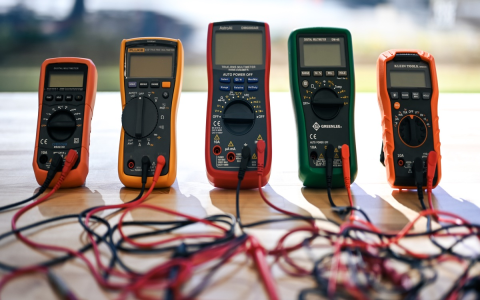Alright folks, let me tell you about this headache I tackled yesterday – figuring out why my car battery kept dying overnight. Felt like a ghost was sipping my battery juice! Ended up deep in a parasitic draw test rabbit hole, trying both the DIY way and some pro gear.
The Annoying Battery Mystery
So there I was, Tuesday morning coffee in hand, ready to head out. Hop in the truck, turn the key… and nada. Just that dreaded clicking sound. Jumped it off, drove fine. Next morning? Same darn thing. Something was draining that battery while it slept. Time to play detective.
Gearing Up for the DIY Fight
Pulled out ye olde trusty multimeter – the basic kind everyone has. Grabbed some wrenches too. Remembered the basics: gotta let the car “sleep” first. Locked it up, disabled the alarm (just in case it caused weirdness), and sat on my hands for like, an hour. Patience is key, apparently.
Popped the hood, disconnected the negative battery cable. Connected my multimeter between the negative terminal and the cable itself, setting it to measure amps. This is where DIY gets fiddly. Had to be mega careful not to blow the multimeter’s fuse measuring too much current at once.

- Step 1: Disconnected the negative battery cable.
- Step 2: Set multimeter to 10A DC scale.
- Step 3: Connected one probe to the cable, one to the battery terminal.
- Step 4: Held my breath… saw a reading: 0.25A. 250 milliamps! Way too high!
Okay, confirmed a serious drain. But what the heck was causing it? The fun part begins: the fuse pulling game.
The Fuse Pulling Marathon
Started pulling fuses one by one under the dash, watching that multimeter reading like a hawk after each pull. Pulled a fuse… reading dropped dramatically? Bingo! Problem circuit found!
Or so I thought. Pulled the fuse for the radio. Saw a little dip, but not enough. Kept going. Dashboard fuse? Nope. This took ages. Back hurt, knees cracked. Then… pulled a fuse labeled “Body Control Module” or some such. CLICK. The reading instantly dropped to like 0.05A (50 milliamps) – that’s normal background drain! Felt a surge of victory! Kinda.
Now I knew the BCM circuit had a leak. But why? Was it a stuck relay? Faulty module? Bad wiring? The basic multimeter method got me this far, but I hit a wall. Needed more intel.
Calling in the Bigger Guns
Thankfully, my mechanic buddy lets me borrow toys sometimes. Got my hands on a professional clamp-style DC amp meter. This thing is slick – clamps right around a cable, measures current without disconnecting anything. Also had a scan tool that could talk to the car’s modules.
Connected the clamp meter around the battery cable. Let the car nap again. This thing instantly showed me the draw, no fuse pulling gamble. Saw the same ~250mA draw, but easier. Then, I hooked up the scan tool. While the draw was happening, I asked the scan tool to see which modules were awake or acting weird.
Boom! The scan tool showed the Power Door Lock Module wasn’t going fully to sleep after locking. It was stuck in a weird low-power but not-off state, constantly draining power. Never would have pinpointed it that fast just yanking fuses! Confirmed it by unplugging that specific module connector – draw vanished completely. Solved!
DIY Grit vs. Pro Smarts
So, the DIY method? It works. With patience and careful hands, my multimeter did prove there was a draw and helped identify the general culprit circuit. It’s satisfying as heck to do it yourself with basic tools.
BUT, man it was slow. Fuse pulling feels like searching for a needle in a haystack blindfolded. And it only got me to the neighborhood of the problem, not the exact house.
The pro tools? Massive time savers. The clamp meter gave instant, safe, ongoing measurement. The scan tool directly interrogated the car’s computers, pointing me straight to the malfunctioning module. Done in minutes what took me an hour-plus with the DIY approach.
What I Actually Learned
- DIY Multimeter: Essential starter tool. Gets the job done if you’re stubborn and cheap. Requires patience and fuse-pulling endurance.
- Clamp Meter + Scan Tool: Game changers for speed and precision. Less sweat, less chance of mistakes. Worth the cost (or borrowing!) if you do this often.
- Core Lesson: Both paths lead to the truth. DIY builds character and understanding. Pro tools build efficiency. Knowing how to do it the hard way makes you appreciate the easy way even more!
Next time my battery dies? I know where to start, and maybe I’ll rent that clamp meter sooner!

